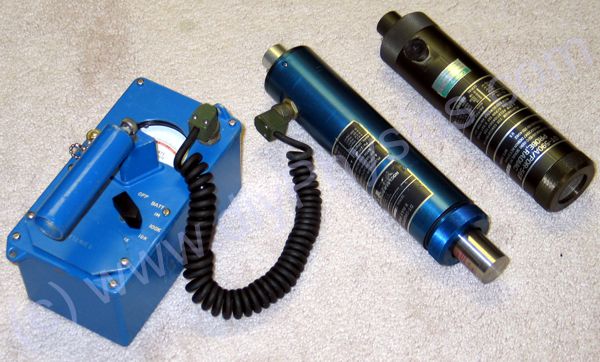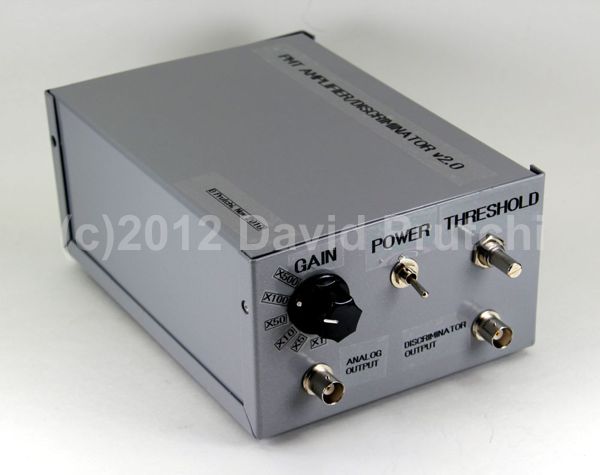
For a detailed writeup in pdf format please CLICK HERE
I’ve been planning some experiments with single-photon and ultra-low light levels. For these experiments I want the collection area to be large and for the detector to have very broad spectral response, so my preference is to use a photomultiplier tube (PMT) instead of a “silicon photomultiplier” avalanche single-photon detector.
I found a brand new EMI 9816B PMT on eBay® which meets my requirements. The 9816B is a 51 mm (2”) diameter end-window photomultiplier, with an S20 infrared-sensitive photocathode, and 14 BeCu dynodes of linear focused design. This tube features a very high gain of 25×106 A/lm under nominal conditions (2,200V) with a quantum efficiency of 21% at the peak response wavelength.
Integration time, and ultimately resolution and sensitivity for detecting single-photons or ultra-weak light levels are dependent on the noise floor (dark counts) which is a function of temperature. Cooling the PMT dramatically reduces its dark current and counts.
I bought a surplus thermoelectrically-cooled housing by Products for Research (Model TE-182) which is made for 2” end-window PMTs. I could not find a surplus base for the EMI 9816B 14-dynode PMT, so I decided to buy a surplus base for a different tube and modify it for the 9816B.

Products for Research TE-182 Thermoelectrically-Cooled Housing for 2″ PMTs
Clearing the inside of the base was a very messy affair. This is because the dynode voltage divider chain is partially potted in silicone, and the rest of the base is filled with expanding thermal-isolation foam. Part of the base is made of plastic, so the use of harsh chemical solvents or heat to remove the silicone rubber and expanding foam were not possible. I thus had to use a scalpel and dental picks to remove all this insulation and be able to disassemble the tube socket.
I built a new divider on a piece of phenolic breadboard . The base is wired for high voltage (-2,300V) applied to the cathode (through a 33kΩ resistor). The dynode_1-to-dynode_14 divider is built with 330kΩ resistors. As suggested by EMI, the cathode-to-focus (and dynode_1) is set at a fixed 300V difference using two 150V Zener diodes in series.

Results from a characterization run are shown in the following table. The room-temperature dark current agrees with the specified value. A very dramatic drop in dark current and dark count rate can be observed when the PMT is cooled.

For a detailed writeup in pdf format please CLICK HERE


 Many surplus scintillation probes have a single connector through which the PMT is fed with high voltage and the anode signal is output. However, this may require an external “Bias-T” (a high voltage / signal splitter) to connect the probe to a high-voltage power supply that is separate from the PMT amplifier/processor.
Many surplus scintillation probes have a single connector through which the PMT is fed with high voltage and the anode signal is output. However, this may require an external “Bias-T” (a high voltage / signal splitter) to connect the probe to a high-voltage power supply that is separate from the PMT amplifier/processor.  Figure 34 in the
Figure 34 in the 


